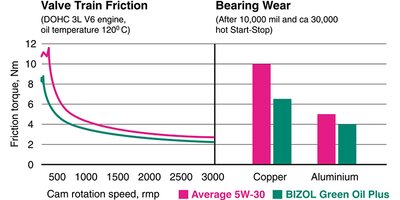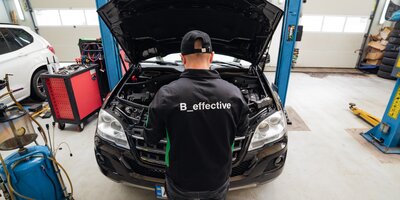What causes engine wear? How to reduce engine wear
The modern marvel of an internal combustion motor powers our vehicles, providing the strength and reliability we rely on for daily transportation. However, just like anything else subjected to constant use, motorized units experience wear and tear over time. Component deterioration can significantly impact performance and longevity. In this article, we will delve into the intricacies of engine wear meaning, explore the various causes behind it, provide actionable tips to reduce and prevent it. Furthermore, we will look at how specialized engine oils, such as BIZOL, play a crucial role in safeguarding your engine’s health. Let’s begin by understanding what engine wear is and the factors that contribute to it.
What is engine wear
Mechanical deterioration is the gradual damage and deterioration of internal combustion propulsion system components due to factors like friction, heat, and pressure. It affects parts such as pistons, bearings, and cylinders. Excessive damage leads to reduced motor efficiency and increased fuel consumption. It's an inherent consequence of the engine's operation.
What causes engine wear
Engine wear and tear can be attributed to several factors, each contributing to the gradual degradation of crucial motor components. Here are some common causes of internal friction-related damage:
-
Friction
Friction between moving parts, such as pistons and cylinder walls, results in surface abrasion over time. This friction generates heat and causes deterioration, which reduces motor efficiency.
-
Contaminants
Dirt, dust, and small metal particles infiltrate the motor lubricant and circulate throughout the system. These contaminants act as abrasive agents, accelerating damage on motor components.
-
Insufficient lubrication
Inadequate or deteriorating motor lubricant can lead to poor lubrication, increasing friction and deterioration between components. Proper lubrication is essential to minimize erosion.
-
High temperatures
Motors operate at elevated temperatures, which can lead to thermal expansion and contractions of metal parts. Over time, this temperature variation can contribute to wear and fatigue.
-
Combustion byproducts
The byproducts of the combustion process, like acids and soot, can accumulate in the motorized unit. These substances can corrode and erode components, hastening damage.
-
Poor maintenance
Neglecting routine maintenance, such as oil changes and filter replacements, can exacerbate erosion issues. Regular maintenance is essential for keeping internal friction-related damage in check.

How to prevent engine wear
Preventing a wear engine is vital for motorized unit longevity and performance. Here’s how to do it effectively:
-
Regular maintenance.
-
Choose quality motor lubricant.
-
Maintain proper oil levels: ensure your motorized unit always has the right amount of oil.
-
Smooth driving: gentle driving reduces motor stress and minimizes damage, so avoid aggressive habits.
-
Allow a minute for your engine to warm up before driving, especially in cold weather.
-
Keep your motorized unit’s cooling system in good condition to prevent overheating, which leads to damage.
-
Use quality fuel: high-quality fuel with proper additives keeps the engine clean, reducing wear from deposits and contaminants.
Following these steps will extend your motorized unit’s life and reduce wear-related issues. Next, let’s look at how BIZOL engine oils specifically protect against internal friction-related damage.
How BIZOL engine oils prevent engine wear
BIZOL engine lubricants are engineered with advanced formulations that provide optimal protection against motor wear. Here’s how they do it:
-
High lubrication: BIZOL engine oils offer exceptional lubrication, reducing friction and preventing premature wear on motor components.
-
Advanced additives: these lubricants contain specialized additives that create a protective barrier on engine surfaces, shielding them from the harmful effects of heat and friction.
-
Cleaner engines: BIZOL oils help maintain a cleaner engine by preventing the buildup of sludge and deposits, which can contribute to damage.
-
Optimized viscosity: the viscosity of BIZOL oils is carefully tuned to ensure smooth propulsion system operation.
-
Extended oil life: BIZOL oils have excellent resistance to thermal breakdown, allowing for extended lubricant change intervals without sacrificing protection.
Engine wear is an inherent aspect of combustion motors, impacting performance and longevity. To combat it, adopt regular maintenance, select high-quality oils like BIZOL, and practice smooth driving. BIZOL’s advanced formulations offer superior protection against damage. By implementing these measures, you ensure a longer, healthier life for your motorized unit.

You might also like

Prof. Dr. Boris Zhmud, Head of R&D, BIZOL Germany

Within the realm of automotive care, few substances are as vital as motor oil, in ensuring the seamless operation of a vehicle's propelling device. It serves as the lifeblood of a motor, ensuring that the intricate machinery operates efficiently and without unnecessary friction. The functions of motor lubricant substance extend far beyond just lubrication, encompassing a range of critical tasks that contribute to the longevity and performance of a propelling mechanism. In this article, we’ll delve into the multifaceted functions of motor oil and explore how it plays a pivotal role in maintaining the health of automotive powerhouses.

The modern marvel of an internal combustion motor powers our vehicles, providing the strength and reliability we rely on for daily transportation. However, just like anything else subjected to constant use, motorized units experience wear and tear over time. Component deterioration can significantly impact performance and longevity. In this article, we will delve into the intricacies of engine wear meaning, explore the various causes behind it, provide actionable tips to reduce and prevent it. Furthermore, we will look at how specialized engine oils, such as BIZOL, play a crucial role in safeguarding your engine’s health. Let’s begin by understanding what engine wear is and the factors that contribute to it.

